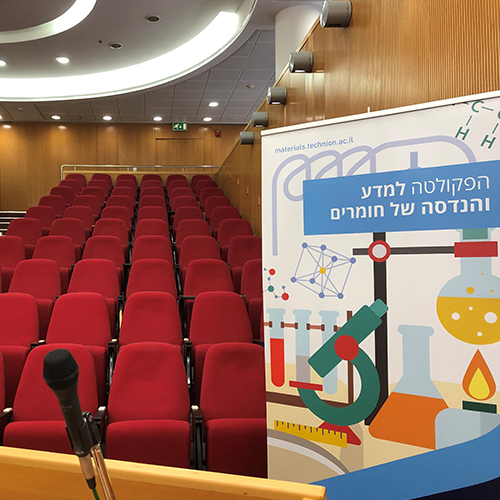
Mrs. Awj Fada`os - M.Sc. candidate
11/02/2024
אודיטוריום ע"ש דויד וואנג, בניין מידן, קומה 3
14:30
Transition metal oxides like iron, cobalt, zinc, and lead received considerable attention over the last few years due to their outstanding performance and potential applications. Incorporation of organic molecules into the lattice structure of inorganic crystalline hosts is a common phenomenon in biomineralization and has been shown to alter various properties of the crystalline host. It was recently discovered that it is possible to manipulate the electrical, magnetic, and mechanical properties through the incorporation of bio-organic molecules. For example, the incorporation of amino acids into Manganese(II) carbonate reduces its paramagnetic susceptibility and decrease its Néel temperature.
Herein, we expanded this bioinspired strategy to yet another magnetic system – magnetite (Fe3O4). Magnetite is a widespread magnetic iron oxide encountered in many biological and geological systems. It shows an excellent prospect for applications in magnetic resonance imaging, drug-delivery and thus has attracted tremendous attention. The magnetic properties of Fe3O4 were manipulated by the incorporating amino acids. We measured the magnetic properties, determined the optimal concentration and amino acid type. Moreover, organic-incorporated magnetite was successfully synthesized. High-resolution powder X-ray diffraction was employed to ascertain the crystal structure and quantify anisotropic lattice distortions. Additionally, high-resolution scanning electron microscopy was employed to study the morphology while MPMS3 SQUID magnetometer was used to characterize the magnetization.


